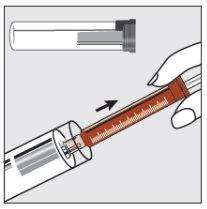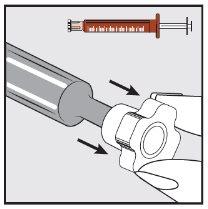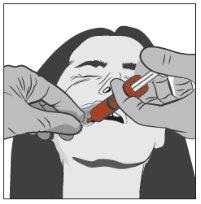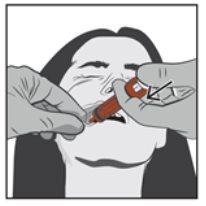
ОРОКСЕЛАМ 10 мг РАСТВОР ДЛЯ ПРИЕМА ВНУТРИ
Спросите врача о рецепте на ОРОКСЕЛАМ 10 мг РАСТВОР ДЛЯ ПРИЕМА ВНУТРИ

Инструкция по применению ОРОКСЕЛАМ 10 мг РАСТВОР ДЛЯ ПРИЕМА ВНУТРИ
Введение
Инструкция: информация для пользователя
Орокселам 2,5 мг раствор для bucального применения
Орокселам 5 мг раствор для bucального применения
Орокселам 7,5 мг раствор для bucального применения
Орокселам 10 мг раствор для bucального применения
мидазолам
Прочитайте внимательно всю инструкцию перед началом использования этого лекарства, поскольку она содержит важную информацию для вас.
- Сохраните эту инструкцию, поскольку вам может потребоваться перечитать ее.
- Если у вас есть какие-либо вопросы, проконсультируйтесь с вашим врачом или фармацевтом.
- Это лекарство было назначено только вам, и не передавайте его другим людям, даже если у них такие же симптомы, как у вас, поскольку оно может нанести им вред.
- Если вы испытываете побочные эффекты, проконсультируйтесь с вашим врачом или фармацевтом, даже если это побочные эффекты, которые не перечислены в этой инструкции. См. раздел 4.
Содержание инструкции
- Что такое Орокселам и для чего он используется
- Что вам нужно знать перед началом использования Орокселама
- Как использовать Орокселам
- Возможные побочные эффекты
- Хранение Орокселама
- Содержание упаковки и дополнительная информация
1. Что такое Орокселам и для чего он используется
Орокселам раствор для bucального применения содержит лекарство под названием мидазолам. Мидазолам относится к группе лекарств, известных как бензодиазепины.
Орокселам используется для прекращения внезапной и длительной судороги у младенцев от 3 месяцев до взрослых.
У младенцев от 3 месяцев до 6 месяцев лечение должно проводиться только в больнице, где можно контролировать пациента и где есть оборудование для реанимации.
Это лекарство должно использоваться только родителями/опекунами, когда у пациента диагностирована эпилепсия.
2. Что вам нужно знать перед началом использования Орокселама
- Не используйте Орокселам, если у пациента:
- аллергия на мидазолам, бензодиазепины (например, диазепам) или на любой другой компонент этого лекарства (перечисленных в разделе 6);
- болезнь нервов и мышц, которая вызывает мышечную слабость (миастения гравис);
- серьезные проблемы с дыханием в состоянии покоя (Орокселам может ухудшить проблемы с дыханием);
- болезнь, которая вызывает частые прерывания дыхания во время сна (апноэ во сне);
- тяжелые проблемы с печенью.
Предостережения и меры предосторожности:
Дети:
Проконсультируйтесь с вашим врачом или фармацевтом перед началом использования Орокселама, если у пациента:
- есть почечная, печеночная или сердечная болезнь;
- есть болезнь легких, которая вызывает затруднение дыхания периодически.
Взрослые:
Проконсультируйтесь с вашим врачом или фармацевтом перед началом использования Орокселама, если:
- вы старше 60 лет.
- у вас есть хроническая болезнь (например, дыхательная недостаточность, почечная, печеночная или сердечная недостаточность).
- вы ослаблены (у вас есть болезнь, которая делает вас очень слабым, утомленным и без энергии).
Это лекарство может вызвать у людей забывчивость, сонливость или нарушение концентрации и координации. Это может повлиять на выполнение задач, которые требуют умения, таких как вождение, езда на велосипеде или использование машин.
После приема этого лекарства пациент не должен водить, ездить на велосипеде или использовать машины до полного восстановления. Спросите у вашего врача, если вам нужно больше информации.
Это лекарство следует избегать у пациентов с историей алкоголизма или наркомании.
Более вероятно, что могут произойти потенциально смертельные инциденты у пациентов с проблемами дыхания или сердечными проблемами, особенно при приеме более высоких доз Орокселама.
Дети младше 3 месяцев: Орокселам не должен назначаться детям младше 3 месяцев из-за отсутствия информации в этой возрастной группе.
Пациенты пожилого возраста:
Пациенты пожилого возраста более чувствительны к эффектам бензодиазепинов.
Если у вас есть какие-либо вопросы о том, применимы ли вышеперечисленные пункты к пациенту, проконсультируйтесь с вашим врачом или фармацевтом перед назначением этого лекарства.
Другие лекарства и Орокселам
Сообщите вашему врачу или фармацевту, если пациент использует, недавно использовал или может использовать любое другое лекарство. Если у вас есть какие-либо вопросы о каком-либо лекарстве, которое пациент принимает и которое может повлиять на использование Орокселама, проконсультируйтесь с вашим врачом или фармацевтом.
Это очень важно, поскольку использование нескольких лекарств одновременно может усилить или ослабить эффект принимаемых лекарств.
Эффекты Орокселама могут усиливаться следующими лекарствами:
- антиэпилептические лекарства (для лечения эпилепсии), например, фенитоин
- антибиотики, например, эритромицин, кларитромицин
- антифунгальные лекарства, например, кетоконазол, вориконазол, флуконазол, итраконазол, позаконазол
- лекарства для лечения язвы, например, циметидин, ранитидин и омепразол
- лекарства, используемые для лечения артериального давления, например, дилтиазем, верапамил
- некоторые лекарства, используемые для лечения ВИЧ и СПИДа, например, саквинавир, комбинация лопинавира/ритонавира
- обезболивающие наркотические лекарства (сильные обезболивающие), например, фентанил
- лекарства, используемые для снижения жира в крови, например, аторвастатин
- лекарства, используемые для лечения тошноты, например, набилон
- снотворные лекарства (лекарства для индукции сна)
- седативные антидепрессанты (лекарства для лечения депрессии, которые вызывают сонливость)
- седативные лекарства (лекарства для расслабления)
- анестетики (лекарства для обезболивания)
- антигистаминные лекарства (лекарства для лечения аллергии)
Эффекты Орокселама могут ослабевать следующими лекарствами:
- рифампицин (используется для лечения туберкулеза)
- ксантины (используются для лечения астмы)
- трава Святого Иоанна (лекарство на основе растений). Его следует избегать у пациентов, принимающих Орокселам.
Орокселам может усиливать эффект некоторых миорелаксантов, например, баклофена (вызывая увеличение сонливости). Это лекарство также может сделать некоторые лекарства менее эффективными, например, леводопу (лекарство, используемое для лечения болезни Паркинсона).
Проконсультируйтесь с вашим врачом или фармацевтом, чтобы получить больше информации о лекарствах, которые пациент должен избегать во время приема Орокселама.
Использование Орокселама с пищей и напитками
Пациент не должен пить алкоголь во время приема Орокселама. Алкоголь может увеличить седативный эффект этого лекарства и вызвать сильную сонливость.
Пациент не должен пить грейпфрутовый сок во время приема Орокселама. Грейпфрутовый сок может увеличить седативный эффект этого лекарства и вызвать сильную сонливость.
Беременность
Если пациентка, которая будет принимать это лекарство, беременна или кормит грудью, считает, что может быть беременной или планирует беременность, проконсультируйтесь с вашим врачом перед использованием этого лекарства.
Применение высоких доз Орокселама в течение последних 3 месяцев беременности может вызвать аномальный сердечный ритм у плода. Дети, родившиеся после применения этого лекарства во время родов, также могут испытывать трудности с кормлением, дыханием и плохим мышечным тонусом при рождении.
Грудное вскармливание
Сообщите врачу, если пациентка кормит грудью. Хотя небольшие количества Орокселама могут проникать в грудное молоко, возможно, не потребуется прекращать грудное вскармливание. Врач посоветует, следует ли пациентке кормить ребенка после приема одной дозы этого лекарства.
Вождение и использование машин
Орокселам может вызвать у пациента сонливость, забывчивость или нарушение концентрации и координации. Это может повлиять на выполнение задач, которые требуют умения, таких как вождение, езда на велосипеде или использование машин.
После приема этого лекарства пациент не должен водить, ездить на велосипеде или использовать машины до полного восстановления. Спросите у вашего врача, если вам нужно больше информации.
Орокселам содержит натрий
Это лекарство содержит менее 1 ммоль натрия (23 мг) на одну дозу, что означает, что оно практически не содержит натрия.
3. Как использовать Орокселам
Следуйте точно инструкциям по применению этого лекарства, указанным вашим врачом. В случае сомнений проконсультируйтесь с вашим врачом или фармацевтом.
Доза
Врач назначит пациенту подходящую дозу Орокселама, которая обычно зависит от возраста пациента. Каждая доза имеет разный цвет, который указан на упаковке, трубке и шприце, содержащем лекарство.
В зависимости от возраста пациент получит одну из следующих доз, в упаковке с цветовой маркировкой:
Возрастная группа | Доза | Цвет маркировки |
3 месяца до 1 года | 2,5 мг | Желтый |
1 год до 5 лет | 5 мг | Синий |
5 лет до 10 лет | 7,5 мг | Фиолетовый |
10 лет и взрослые | 10 мг | Оранжевый |
Одна доза шприца содержит полную дозу. Не вводите более одной дозы.
У младенцев от 3 месяцев до 6 месяцев лечение должно проводиться только в больнице, где можно контролировать пациента и где есть оборудование для реанимации.
Подготовка к применению этого лекарства
Если у пациента произошла судорога, дайте его телу двигаться свободно, не пытайтесь удерживать его. Переместите его только если он находится в опасности, например, вблизи глубокой воды, огня или острых предметов.
Поддержите голову пациента на мягком предмете, таком как подушка или на вашем колене. Проверьте, что лекарство содержит правильную дозу для пациента, в зависимости от его возраста.
Как применить это лекарство
Попросите врача, фармацевта или медсестру научить вас, как принимать или применять это лекарство. В случае сомнений всегда спрашивайте у вашего врача, фармацевта или медсестры.
Информация о том, как применить это лекарство, также указана на этикетке трубки.
Орокселам не должен быть введен внутривенно. Не ставьте никакую иглу в шприц.
Шаг 1 | |
| Держите пластиковую трубку, разорвите упаковку с одного конца и удалите крышку. Выньте шприц из трубки. |
Шаг 2 | |
| Удалите прозрачную крышку с кончика шприца и утилизируйте ее безопасно. |
Шаг 3 | |
| С помощью указательного пальца и большого пальца осторожно потяните за щеку пациента и поместите кончик шприца в заднюю часть пространства между внутренней частью щеки и десной. |
Шаг 4 | |
| Медленно нажмите на поршень шприца, пока он не остановится. Медленно введите всю жидкость в пространство между десной и щекой (полость рта). Если это назначено вашим врачом (для больших объемов и/или более маленьких пациентов), можно ввести примерно половину дозы на одной стороне рта, а затем другую половину на другой стороне рта пациента. |
Когда вызывать скорую помощь
Следуйте всегда рекомендациям по лечению, предоставленным врачом пациента или как указано медицинским специалистом. В случае сомнений обратитесь за медицинской помощью немедленно, если:
- Судорога не проходит в течение 10 минут.
- Вы не можете опустошить содержимое шприца или пролили часть его.
- Дыхание пациента замедляется или останавливается (например, медленное или поверхностное дыхание или синие губы).
- Вы наблюдаете признаки сердечного приступа, которые могут включать боль в груди, которая может распространиться на шею и плечи и до левого плеча.
- Пациент рвет и судорога не проходит в течение 10 минут.
- Вы давали пациенту слишком много Орокселама и наблюдаете признаки передозировки, которые включают:
- Сонливость, усталость, слабость
- Спутанность сознания или дезориентация
- Отсутствие рефлекса в колене или реакции на щипок
- Затруднение дыхания (медленное или поверхностное дыхание)
- Низкое кровяное давление (головокружение и чувство обморока)
- Кома
Сохраните шприц, чтобы показать его медицинскому персоналу скорой помощи или врачу.
Не вводите больше лекарства, чем назначено врачом для пациента.
Если пациент рвет
- Не вводите пациенту еще одну дозу Орокселама.
- Если судорога не проходит в течение 10 минут, вызовите скорую помощь.
Если у вас есть какие-либо другие вопросы о использовании этого лекарства, проконсультируйтесь с вашим врачом или фармацевтом.
4. Возможные побочные эффекты
Как и все лекарства, это лекарство может вызывать побочные эффекты, хотя не все люди испытывают их.
Тяжелые побочные эффекты
Обратитесь за медицинской помощью немедленно или позвоните в скорую помощь, если пациент испытывает следующие побочные эффекты:
- Тяжелое затруднение дыхания, например, медленное или поверхностное дыхание или синие губы. В очень редких случаях дыхание может остановиться.
- Сердечный приступ. Симптомы могут включать боль в груди, которая может распространиться на шею и плечи и до левого плеча.
- Отек лица, губ, языка или горла, который затрудняет глотание или дыхание, или бледная кожа, слабый и быстрый пульс, или чувство потери сознания. Возможно, у вас тяжелая аллергическая реакция.
Другие побочные эффекты
Если пациент испытывает любой побочный эффект, проконсультируйтесь с вашим врачом, фармацевтом или медсестрой, даже если это возможные побочные эффекты, которые не перечислены в этой инструкции.
Частые побочные эффекты (могут затронуть до 1 из 10 человек):
- Тошнота и рвота.
- Сонливость или снижение сознания
Редкие побочные эффекты (могут затронуть до 1 из 100 человек):
- Кожная сыпь, крапивница (пятна), зуд
Очень редкие побочные эффекты (могут затронуть до 1 из 10 000 человек):
- Агитация, беспокойство, враждебность, гнев или агрессия, возбуждение, спутанность сознания, эйфория (чрезмерное чувство радости или возбуждения) или галлюцинации (видение и, возможно, слышание вещей, которые на самом деле не происходят)
- Мышечные спазмы и мышечные подергивания (подергивание мышц, которое нельзя контролировать)
- Снижение бдительности
- Головная боль
- Головокружение
- Затруднение координации мышц
- Судороги (конвульсии)
- Временная потеря памяти. Продолжительность зависит от количества введенного Орокселама.
- Низкое кровяное давление, медленный сердечный ритм или покраснение лица и шеи (рубец)
- Ларингоспазм (сужение голосовых связок, которое затрудняет дыхание и вызывает шум при дыхании)
- Запор
- Сухость во рту
- Усталость
- Икота
Сообщение о побочных эффектах
Если вы испытываете любой побочный эффект, проконсультируйтесь с вашим врачом, фармацевтом или медсестрой, даже если это возможные побочные эффекты, которые не перечислены в этой инструкции. Вы также можете сообщить о них напрямую через систему фармаковигиланса: www.notificaram.es. Сообщая о побочных эффектах, вы можете внести свой вклад в предоставление более полной информации о безопасности этого лекарства.
5. Хранение Орокселама
Храните это лекарство вне поля зрения и досягаемости детей.
Не используйте это лекарство после даты истечения срока годности, указанной на упаковке и на этикетках трубки и шприца для bucального применения, после «Срок годности». Дата истечения срока годности - последний день месяца, указанного.
Храните при температуре ниже 30 °C
Храните шприц для bucального применения в защитной пластиковой трубке.
Не используйте это лекарство, если упаковка открыта или повреждена.
Е
Лекарства не должны выбрасываться в канализацию или мусор. Поместите упаковку и лекарства, которые вам больше не нужны, в пункт сбора лекарств в аптеке. Спросите у вашего фармацевта, как утилизировать упаковку и лекарства, которые вам больше не нужны. Таким образом, вы поможете защитить окружающую среду.
6. Содержание упаковки и дополнительная информация
Состав орокселама
Активное вещество - мидазолам
- Орокселам 2,5 мг - каждая предзагруженная шприц-инжектор для перорального использования содержит мидазолам гидрохлорид, эквивалентный 2,5 мг мидазолама в 0,5 мл раствора.
- Орокселам 5 мг - каждая предзагруженная шприц-инжектор для перорального использования содержит мидазолам гидрохлорид, эквивалентный 5 мг мидазолама в 1 мл раствора.
- Орокселам 7,5 мг - каждая предзагруженная шприц-инжектор для перорального использования содержит мидазолам гидрохлорид, эквивалентный 7,5 мг мидазолама в 1,5 мл раствора.
- Орокселам 10 мг - каждая предзагруженная шприц-инжектор для перорального использования содержит мидазолам гидрохлорид, эквивалентный 10 мг мидазолама в 2 мл раствора.
Другие компоненты - хлорид натрия, очищенная вода, соляная кислота и гидроксид натрия (для регулирования pH).
Внешний вид продукта и содержимое упаковки
Орокселам 2,5 мг – упаковка с желтой этикеткой
Орокселам 5 мг – упаковка с синей этикеткой
Орокселам 7,5 мг – упаковка с фиолетовой этикеткой
Орокселам 10 мг – упаковка с оранжевой этикеткой
Орокселам раствор для рта представляет собой прозрачную и бесцветную жидкость.
Он выпускается в предзагруженной шприц-инжекторе для перорального использования из амбер-цветного пластика, без иглы, с поршнем и крышкой. Каждая шприц-инжектор для перорального использования упакована индивидуально в защитную пластиковую трубу.
Орокселам выпускается в коробках, содержащих 2 или 4 предзагруженные шприц-инжектора для перорального использования (одной и той же дозы).
Возможно, что будут продаваться только некоторые размеры упаковки.
Владелец разрешения на маркетинг и производитель
Владелец разрешения на маркетинг
Exeltis Healthcare, S.L.
Аvenida де Миралькампо, 7.
Полигон Индустриаль Миралькампо.
19200 Асукека-де-Энарес.
Гвадалахара.
Испания
Производитель
Лаборатории Ликонса С.А.
Аvenida де Миралькампо, 7
19200 Асукека-де-Энарес
Гвадалахара.
Испания
Это лекарство разрешено в государствах-членах экономического пространства Европейского Союза под следующими названиями:
SE: Мидазолам медицинский валли 2,5 мг, 5 мг, 7,5 мг, 10 мг раствор для рта.
FI: Мидазолам медицинский валли 2,5 мг, 5 мг, 7,5 мг, 10 мг раствор для рта.
DE: Мидазаксиро 2,5 мг, 5 мг, 7,5 мг, 10 мг раствор для рта.
NO: Мидазолам медицинский валли 2,5 мг, 5 мг, 7,5 мг, 10 мг раствор для рта.
NL: Мидазолам ксиромед 2,5 мг, 5 мг, 7,5 мг, 10 мг раствор для рта.
DK: Мидазолам медицинский валли 2,5 мг, 5 мг, 7,5 мг, 10 мг раствор для рта.
IS: Мидазолам медицинский валли 2,5 мг, 5 мг, 7,5 мг, 10 мг раствор для рта.
FR: Мидазолам ликонса 2,5 мг, 5 мг, 7,5 мг, 10 мг раствор для рта.
IE: Мидазолам ликонса 2,5 мг, 5 мг, 7,5 мг, 10 мг раствор для рта.
RO: Мидазолам дезитин 2,5 мг, 5 мг, 7,5 мг, 10 мг раствор для рта.
ES: Орокселам 2,5 мг, 5 мг, 7,5 мг, 10 мг раствор для рта
PL: Солокселам.
IT: Орокселам.
Дата последнего пересмотра этого листка-вкладыша:март 2025
Подробная информация о этом лекарстве доступна на сайте Испанского агентства по лекарствам и медицинским изделиям (AEMPS) http://www.aemps.gob.es

Сколько стоит ОРОКСЕЛАМ 10 мг РАСТВОР ДЛЯ ПРИЕМА ВНУТРИ в Испании в 2025 году?
Средняя цена на ОРОКСЕЛАМ 10 мг РАСТВОР ДЛЯ ПРИЕМА ВНУТРИ в ноябрь, 2025 года составляет около 86.8 евро. Финальная стоимость может зависеть от региона, конкретной аптеки и рецептурного статуса. Для точной информации лучше проверить онлайн или в ближайшей аптеке.
- Страна регистрации
- Средняя цена в аптеках86.8 EUR
- Активное вещество
- Требуется рецептДа
- Производитель
- Информация носит справочный характер и не является медицинской рекомендацией. Перед приемом любых препаратов проконсультируйтесь с врачом. Oladoctor не несет ответственности за медицинские решения, принятые на основе этого контента.
- Аналоги ОРОКСЕЛАМ 10 мг РАСТВОР ДЛЯ ПРИЕМА ВНУТРИФорма выпуска: ГЕЛЬ/ПАСТА/ЖИДКИЙ ДЛЯ ПРИЕМА ВНУТРЬ, 10 мг мидазолама гидрохлоридаАктивное вещество: МидазоламПроизводитель: Neuraxpharm Pharmaceuticals S.L.Требуется рецептФорма выпуска: ГЕЛЬ/ПАСТА/ЖИДКИЙ ДЛЯ ПРИЕМА ВНУТРЬ, 2,5 мг мидазолама гидрохлоридаАктивное вещество: МидазоламПроизводитель: Neuraxpharm Pharmaceuticals S.L.Требуется рецептФорма выпуска: ГЕЛЬ/ПАСТА/ЖИДКИЙ ДЛЯ ПРИЕМА ВНУТРЬ, 5 мг мидазолама гидрохлоридаАктивное вещество: МидазоламПроизводитель: Neuraxpharm Pharmaceuticals S.L.Требуется рецепт
Аналоги ОРОКСЕЛАМ 10 мг РАСТВОР ДЛЯ ПРИЕМА ВНУТРИ в других странах
Лучшие аналоги с тем же действующим веществом и терапевтическим эффектом.
Аналог ОРОКСЕЛАМ 10 мг РАСТВОР ДЛЯ ПРИЕМА ВНУТРИ в Poland
Аналог ОРОКСЕЛАМ 10 мг РАСТВОР ДЛЯ ПРИЕМА ВНУТРИ в Ukraine
Врачи онлайн по ОРОКСЕЛАМ 10 мг РАСТВОР ДЛЯ ПРИЕМА ВНУТРИ
Консультация по дозировке, побочным эффектам, взаимодействиям, противопоказаниям и продлению рецепта на ОРОКСЕЛАМ 10 мг РАСТВОР ДЛЯ ПРИЕМА ВНУТРИ – по решению врача и с учетом местных правил.














